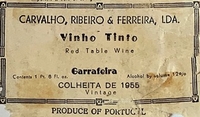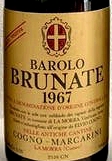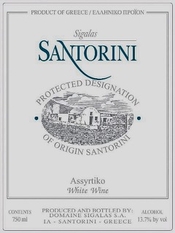The 100-point scale first gained widespread recognition when used by Robert Parker in his publication “The Wine Advocate” in the 1980’s. I have reviewed, judged and rated wines for decades using a variety of scales and I am comfortable using any of them. I have noted that the 100-point scale is one that most widely resonates with the American consumer. Wine, however, has a way of defying rigid classification systems. The late Michael Broadbent wrote in his Great Vintage Wine Book, “However carefully and impartially applied, any system of classification is likely to be contentious.” After enumerating instances when changing ages and tasting environments could influence scores, he concludes: “It is not only unfair, it is really quite impossible to work to a hypothetically pure standard of quality.”
So it is with me. I am still more enamored with a total wine experience than I am with assigning a score. I have been blessed to have more than my share of great wines over four decades of serious tasting, but there have been singularly exceptional events in my experience that are entwined with the wine of the moment. In most cases, the tasting involved some epiphany in my wine education and realization – a moment that illustrated in a potent sensory experience what makes a wine distinctive and desirable. Below is an enumeration a half-dozen of what I will call my “100-point wine experiences.” Some of the wines mentioned are lauded throughout the world, but some are listed because of their personal revelations for me.
1976 Winzerverein Irsch Ockfener Bockstein Riesling Spätlese: This was a revelatory wine for a nascent winelover like me at the time. Sure, I had consumed wines with considerable sweetness by then, but this one was magic! Pure, crystalline flavors were dancing across my palate. It was the first time I had experienced such juicy, bright and pure flavors in such perfect balance. I have had many great Mosel, Saar and Ruwer Prädikatsweins since that time, but this was the first and a great introduction to the finesse and beauty of fine German Rieslings. The price I paid at the time would be an inflation-adjusted $12 today and the producer has disappeared from the US market and may not even exist anymore. It’s proof, though, that one can find life-changing gems among the most affordable wines.
1955 Carvalho, Ribeiro & Ferreira Vinho Tinto Garrafeira: This was an exotic discovery for a new wine aficionado. I was unfamiliar with Iberian wines and probably completely ignorant of Portuguese wines at that time. This wine was intriguing, however, because it had 2+ decades of age and an affordable  price (around $25 equivalent today). Trying it was an education in tasting maturing red wine. The fruit was ripe, round and spicy. The texture was plush and palate-filling. I was enchanted with the seamless complexity and sensuous style of the wine. There was little information on the label. It was likely a blend of varieties like Touriga Nacional, Tinta Barocca and Touriga Franca among others, but it kindled a lifelong interest in sampling and enjoying the depth, complexity and affordability of Portuguese wines.
price (around $25 equivalent today). Trying it was an education in tasting maturing red wine. The fruit was ripe, round and spicy. The texture was plush and palate-filling. I was enchanted with the seamless complexity and sensuous style of the wine. There was little information on the label. It was likely a blend of varieties like Touriga Nacional, Tinta Barocca and Touriga Franca among others, but it kindled a lifelong interest in sampling and enjoying the depth, complexity and affordability of Portuguese wines.
1969 La Reine Pedaque Musigny: Long ago, before I knew much about the hierarchy of the Burgundy wine classification, I was interested in trying some examples. My first efforts at sampling red Burgundies were not particularly rewarding. In retrospect, the vintages and producers of the wines I was purchasing were not the best, and this was well before red Burgundies were exalted in the marketplace. It was, in fact, a pretty difficult economic time for Burgundy producers and the prices were ridiculously low when compared to modern standards. I purchased this wine on a whim, for the modern equivalent of about $35 and kept it around for a few months. I was expecting to be as non-plussed with it as the other reds I had tasted. When I opened it for a casual dinner, it was amazing! The aromas were full of fruit, flowers and exotic spices and the flavors revealed great nuance and depth. Hugh Johnson’s description of Musigny in his World Atlas of Wine was spot on: “A great Musigny makes what is so well described as a ‘peacock’s tail’ in your mouth, opening and becoming more complex and seductive as you swallow it. It is not so strong as Chambertin, not so spicy as Romanée-Conti – but he must have been a great respecter of women who called it ‘feminine’.” The wine was indeed a revelation and I dashed back to the place I had purchased it but, alas, there was no more to be had. That serendipitous purchase set the stage for a lifetime of Burgundy appreciation and it was indeed a singular moment in my winetasting history.
1969 Remoissenet Puligny-Montrachet Les Folatières Tête de Cuvée: Many winelovers can point to a specific wine that opened their eyes and palates to the glory of a favored wine type. For me, white Burgundy will always be defined by this one. I had become familiar with young white Burgundies, but this was  unusual because of its perfect maturity. I tasted it at around 15 years of age and it was a cascade of sensory pleasure. Still vibrant fruit characteristics of apple, peach, citrus and pineapple coddled my palate along with nuances of butter, vanilla, allspice and nutmeg. Although it was completely mouthfilling, it was not heavy in any way, with one flavor moving to the next in endless rounds of savory delight. It taught me not to drink white Burgundy too young, for there was great sensory repayment for patience.
unusual because of its perfect maturity. I tasted it at around 15 years of age and it was a cascade of sensory pleasure. Still vibrant fruit characteristics of apple, peach, citrus and pineapple coddled my palate along with nuances of butter, vanilla, allspice and nutmeg. Although it was completely mouthfilling, it was not heavy in any way, with one flavor moving to the next in endless rounds of savory delight. It taught me not to drink white Burgundy too young, for there was great sensory repayment for patience.
1967 Marcarini Barolo Brunate Riserva: I had experienced several Nebbiolo-based wines prior to this one and was less than impressed. The examples I had were tough, tannic and unyielding as was the reputation of the grape. I tried this  wine at a restaurant in San Francisco called Donatello – a very popular establishment at the time. In truth, I was expecting more of the same withdrawn style I had known but I was taken aback at the profound panoply of fruit, spice, earth and oak flavors that this wine offered. There was no tough and tannic shell here, just layers of red and black fruits backed by sandalwood, anise, flowers, tea leaves and spices. It was exotic, completely resolved, and a delicious tasting experience that has informed all of my subsequent Nebbiolo tastings.
wine at a restaurant in San Francisco called Donatello – a very popular establishment at the time. In truth, I was expecting more of the same withdrawn style I had known but I was taken aback at the profound panoply of fruit, spice, earth and oak flavors that this wine offered. There was no tough and tannic shell here, just layers of red and black fruits backed by sandalwood, anise, flowers, tea leaves and spices. It was exotic, completely resolved, and a delicious tasting experience that has informed all of my subsequent Nebbiolo tastings.
2001 Domaine Sigalas Santorini Assyrtiko: This was a more recent revelation in my winetasting history. A group of us had been touring the wine regions of Greece and had arrived on the gloriously picturesque island of Santorini. It was  toward the end of a long trip, and everyone was tired when we arrived at Domaine Sigalas. We were not looking forward to a multi-vintage tasting, but it wasn’t long before everyone in the group was re-energized by the fabulous quality of the wines. We ended up tasting 18 wines and I selected this vintage to highlight among several others I could have easily chosen. Even though I now had decades of serious tasting experience, this was a remarkable discovery for me. It was a lovely combination of ripe apple, tangerine, lemon curd, marzipan, honey and spice backed by a clean, oyster-shell minerality that kept the finish going on and on. How had I missed this grape for so many years? It shows that there is always more to learn, and I have enjoyed many vintages of this wine since that day.
toward the end of a long trip, and everyone was tired when we arrived at Domaine Sigalas. We were not looking forward to a multi-vintage tasting, but it wasn’t long before everyone in the group was re-energized by the fabulous quality of the wines. We ended up tasting 18 wines and I selected this vintage to highlight among several others I could have easily chosen. Even though I now had decades of serious tasting experience, this was a remarkable discovery for me. It was a lovely combination of ripe apple, tangerine, lemon curd, marzipan, honey and spice backed by a clean, oyster-shell minerality that kept the finish going on and on. How had I missed this grape for so many years? It shows that there is always more to learn, and I have enjoyed many vintages of this wine since that day.
There are more bottles that have informed my wine experience in similar ways, and I may visit them in a future column. These, however, are emblematic of the reasons I love the lore, the sight, the scents and the endless flavor variations of fine wine. All of us will have similar revelations as we try new and exciting wines. Try to appreciate the moments when new windows of sensory delight open for us in the glass. These are experiences that will last a lifetime.
More by Wayne: Wayne Belding
Wine Reviews: Wine Reviews
